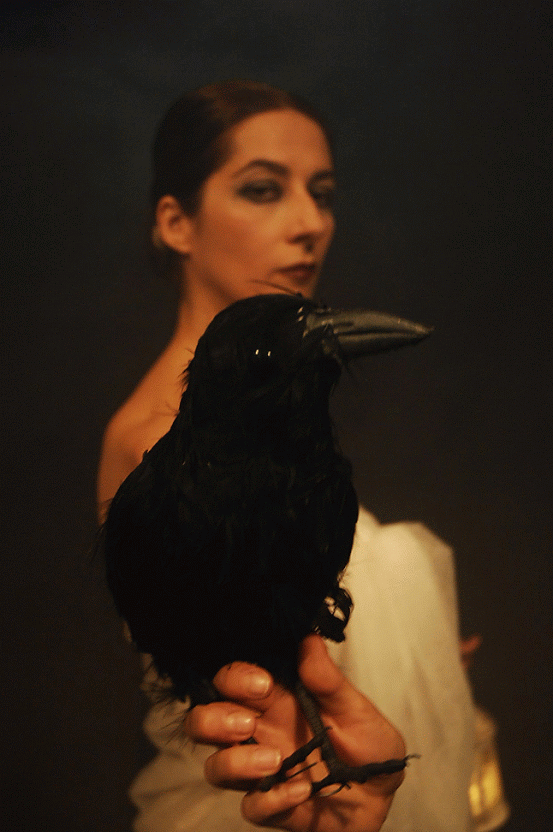
Actress Author Singer
Shakespeare in the World
Hamletelia





Winning show of the Internationales Regie Festival Leipzig 2009
Fersen Prize for Direction 2017
Fersen Prize for Dramaturgy 2013
Best show, best direction, best actress, Corte della Formica Festival, Naples 2010
Best Actress Rome Fringe Festival 2013
Full moon. In a cemetery, a shadow sings a song in the night. It is Ophelia who is resurrected. Her spirit still has something to say.
In life too many have silenced her, starting with Hamlet, all the strangled words now torture her in the grave. After her revelations, many of Elsinore's secrets may no longer be such, starting with her own suicide. This time it' her, Ophelia, the center of the plot, the youthful and archetypal shadow of each of us, the Hamlet character who unburdens his conscience in front of the audience.
It's Hamletelia . Through this multifaceted character Caroline Pagani retraces the intrigue of Hamlet in reverse, and pays homage to Shakespearean poetry steeped in irony, eroticism, linguistic and sound enchantment. Ofelia acts, sings, dances, reconnects the interrupted dialogue with Hamlet , with Gertrude , with life. She tries to answer the questions that haunt her, to fill in the blank spaces of the Shakespearean masterpiece: Why did Hamlet yell at her to go to the convent? Why didn't Gertrude, who saw her in the river, save her? Why did a whim of inspiration prevent her from being a brave woman like Juliet, daring like Lady Macbeth , sensual like Cleopatra ? Why did you have this unfortunate karma? Why, William, why?
Shakespeare is a combination of earth and sky, divinity and madness, sacred and profane.
A tragicomic story of love and death, a tribute to the history of Hamlet's representations, in theater, cinema and painting.
Hamletelia is a rewriting of William Shakespeare's Hamlet from the point of view of the minor female character of Ophelia. Of her ghost. On a stage wrapped in dark earth, the empty space of a pit, here the spirit of Ophelia, brings the various characters back to life through various theatrical devices, from amnesia, to schizophrenia, to reasoned polyglossia, recreating in summary the story of Hamlet , through the reliving of the father, the brother, the beloved, Gertrude, transforming from time to time into one or the other. Love, death, beyond, and metatheatre.
Hamletelia is also a journey in the sense, from the libidinous sensuality of Gertrude to the pure sensuality of Ophelia, to the misogyny of Hamlet, above all through the sense of smell, which has always been considered the most erotic of all the senses. The fertilizer as a scenic element refers to the royal bed, which has become a pigsty of incestuous sheets, to the bodies in decay in the cemetery, to the rottenness of Denmark. Did Ofelia really want to commit suicide?
Did she die chaste? Did she lived the joys of love? Certainly Ofelia - like Hamlet - united by the theme of madness and laceration - represented a scandal at the court of Denmark. She was abused, till the end, by all the men of her life, and even more treacherously, by the only woman who allied herself with that patriarchal world. In this ultra world, Ofelia meets the spirits of other Shakespearean heroines: Desdemona, Lady Macbeth, Cleopatra.
The show travels in the folds of the text, and its representations, with irony and comic relief. Ofelia, cocooned in a white shroud, is now a ghost, a shaman, a gravedigger, a woman who lives imaginary embraces with Hamlet's uniform, to the rhythm of Shakespearean songs, rough, on the bare earth. She becomes the lustful Gertrude, the multi-faceted Hamlet, the incestuous Laertes, a violating soldier, and herself, a Hamletic, comic, funny, sometimes dramatic, modern and contemporary character, of an infinite variety.





